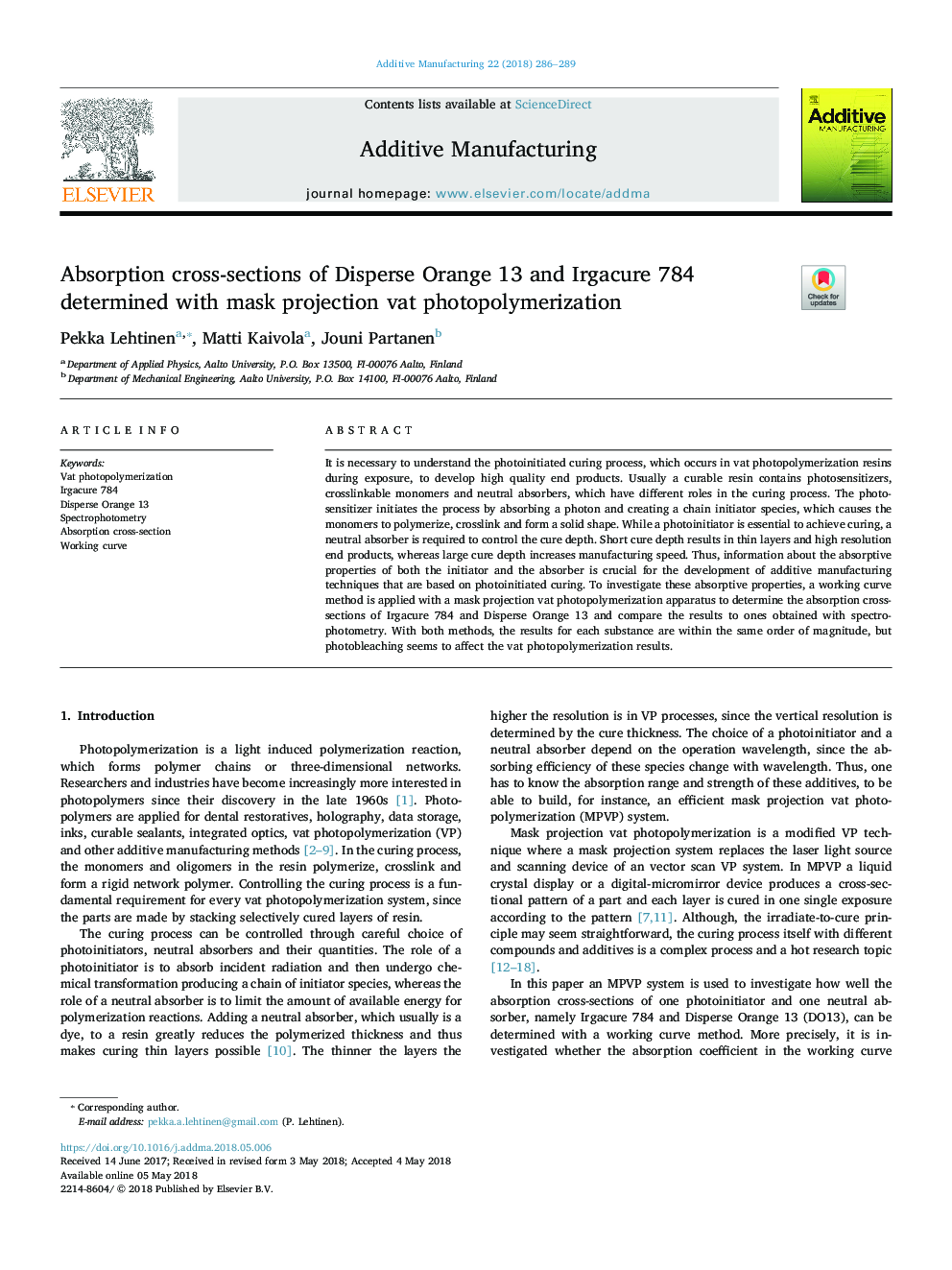| Article ID | Journal | Published Year | Pages | File Type |
|---|---|---|---|---|
| 7205748 | Additive Manufacturing | 2018 | 4 Pages |
Abstract
It is necessary to understand the photoinitiated curing process, which occurs in vat photopolymerization resins during exposure, to develop high quality end products. Usually a curable resin contains photosensitizers, crosslinkable monomers and neutral absorbers, which have different roles in the curing process. The photosensitizer initiates the process by absorbing a photon and creating a chain initiator species, which causes the monomers to polymerize, crosslink and form a solid shape. While a photoinitiator is essential to achieve curing, a neutral absorber is required to control the cure depth. Short cure depth results in thin layers and high resolution end products, whereas large cure depth increases manufacturing speed. Thus, information about the absorptive properties of both the initiator and the absorber is crucial for the development of additive manufacturing techniques that are based on photoinitiated curing. To investigate these absorptive properties, a working curve method is applied with a mask projection vat photopolymerization apparatus to determine the absorption cross-sections of Irgacure 784 and Disperse Orange 13 and compare the results to ones obtained with spectrophotometry. With both methods, the results for each substance are within the same order of magnitude, but photobleaching seems to affect the vat photopolymerization results.
Related Topics
Physical Sciences and Engineering
Engineering
Industrial and Manufacturing Engineering
Authors
Pekka Lehtinen, Matti Kaivola, Jouni Partanen,
